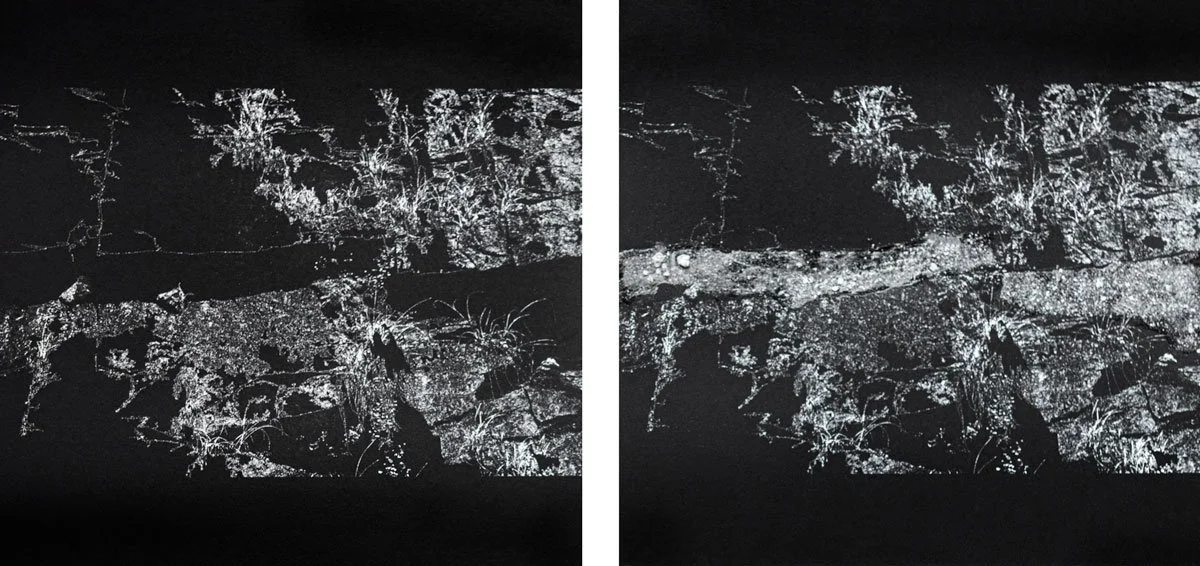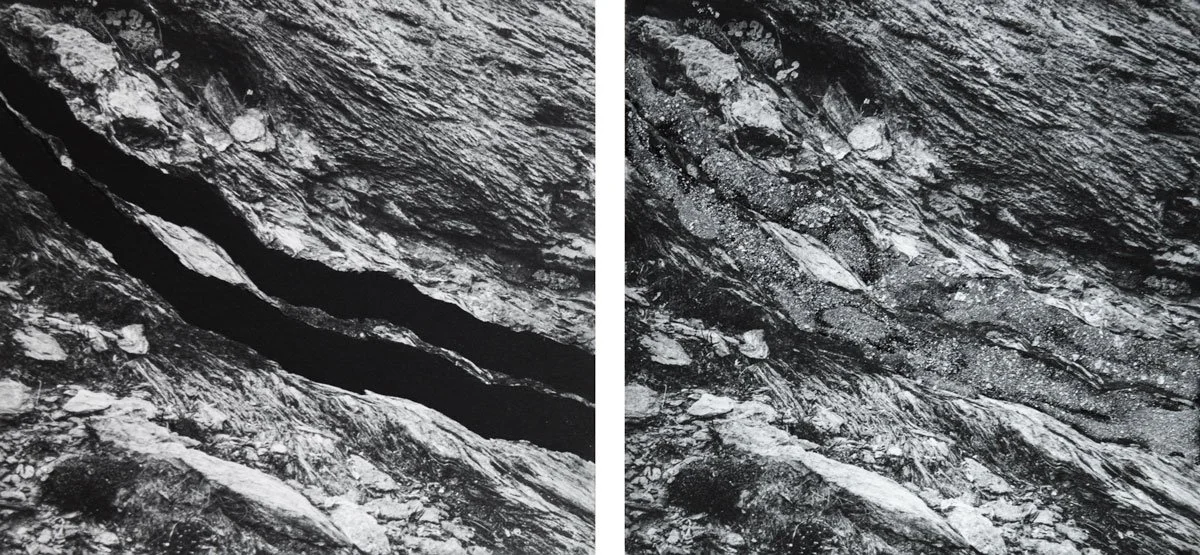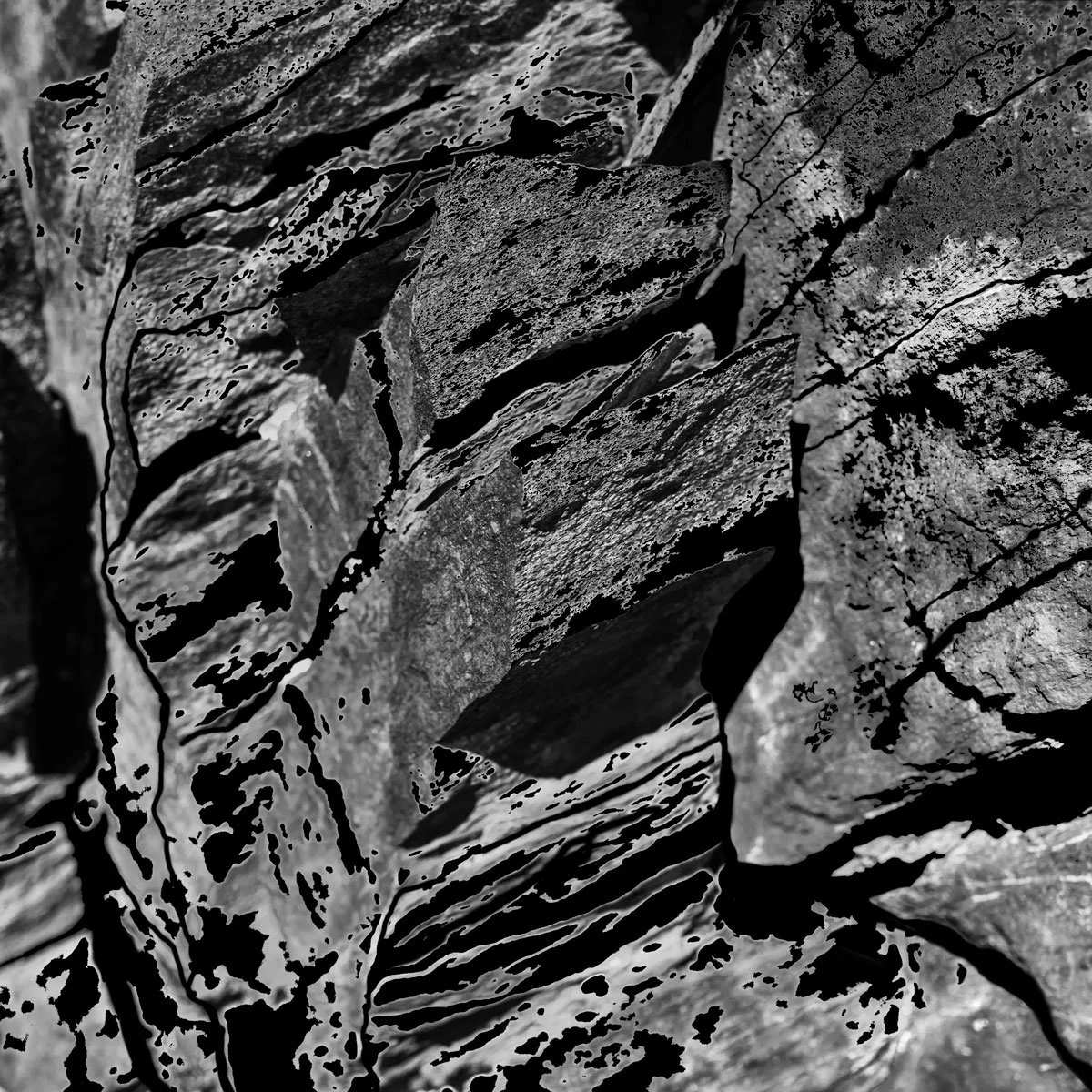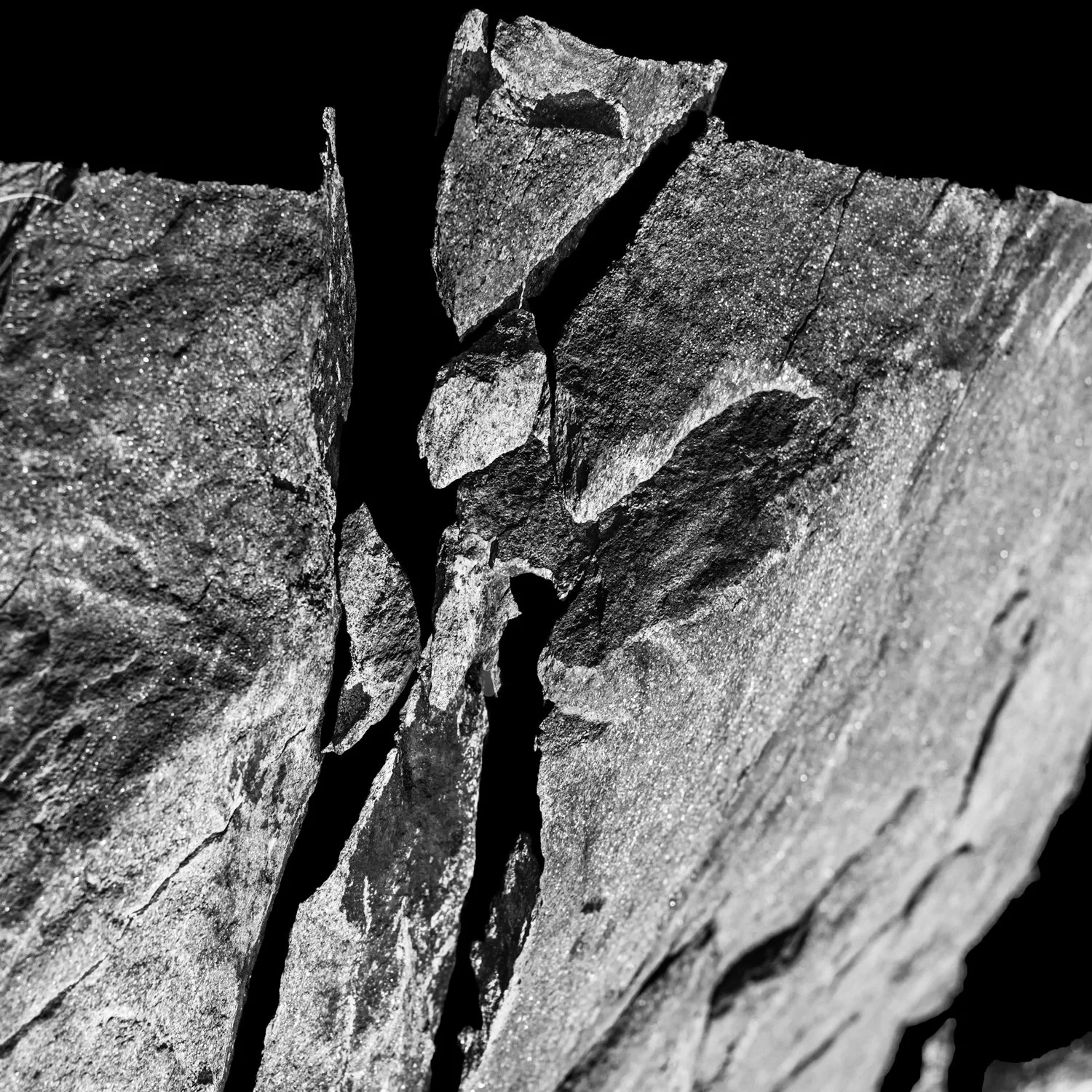breaks/Kintsugi
looks at the traces of violent change in Alpine mountains. Once considered powerful and stable natural objects,
in recent years we have become aware of their fragility, the outcome of violent evolution and the damage caused
by human intervention. As an expression of aesthetic and political concerns, I wonder whether there is anything
we can do to repair the wounds. Can I, as an artist, imagine a non-invasive visual strategy of healing?
Breaks/Kintsugi has allowed me to explore photography as a language, its long history and materiality, and to
expand its richness, when it was hailed as an “objective” witness of what exists around us, an instrument that
“freezes” a moment in the flux of time, and a technique for producing countless and therefore widely available
material prints.
In the final version, images are paired: the image on the left records the outcome of natural and human change;
I have stressed some fractures, or wounds, by embossing the paper in the printing phase. The image on the right
attempts to show some healing: I have filled the embossments with fragments of stone, resorting to the practice
of Kintsugi, a way to repair fractures without hiding the scars left on the objects. The final result is somehow a
third object, which is neither the original version of the scene documented in the photograph, nor a fictional
creation.
The printed method I have chosen is constitutive of the project itself: I have expressed the intense “materiality”
and “historicity” of photography and of the subject matter I have chosen by using a photogravure technique
applied to a polymeric base, in the footsteps of XIXth and early XXth century photogravures. As was the case with
those older works, each “print” I produce is unique. I can indeed produce as many as I want or can, but my hope
is to contribute to the conversation about the role of the singular work of art in contemporary photographic practice,
going beyond its classical interpretation as typical of “the age of mechanical reproduction” and addressing,
indirectly, the issues raised by today’s stochastic AI creation.










